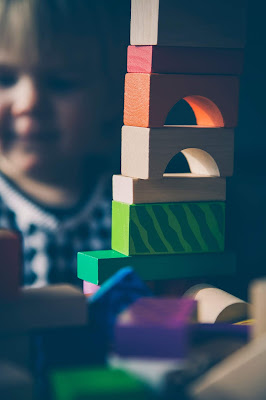Parent Corner: Spatial Awareness for Speech and Language

First of all, what is spatial awareness?
Spatial awareness is making sense of the space around us, it is part of our perception. This is an important skill that children develop at an early stage of life. Full fledged awareness of their relationship to space and to objects can be developed overtime. Let's help our children build up their spatial awareness skills through interaction and language.
Examples of Spatial Awareness Over time
An infant starts to become familiar with their own body, such as their hands. The infant's hands help grab, reach out in to space. Preschool aged children may use blocks to build and to tumble. Young children in school can follow directions that include spatial terms such as "put your backpack under the chair".
How Parents/Caregivers Can Help
Spatial awareness can be achieved kinesthetically (with movement). Also, we certainly can teach our kids important spatial terms/concepts through description. For example, we can say "Can you help me put your shoes under the bed?" "Let's put all of the toys in the box." Practicing spatial concepts can teach our children to build, remove, fill up space. Mastering spatial concepts will likely improve math, language, and other skills.
If you or someone you know needs the services of a licensed and certified speech-language pathologist, please be sure to discuss your concerns with a physician, a speech-language pathologist, or another qualified provider. You can also find a provider through the ASHA ProFind service or visit us at www.bilingualspeech.org for more information. NOTE: This article is intended only as a general source of information, i.e, it is not intended to replace information given to you by a qualified health professional that is familiar with your particular circumstances. Lastly, if you have an urgent medical need, please seek immediate medical attention.

